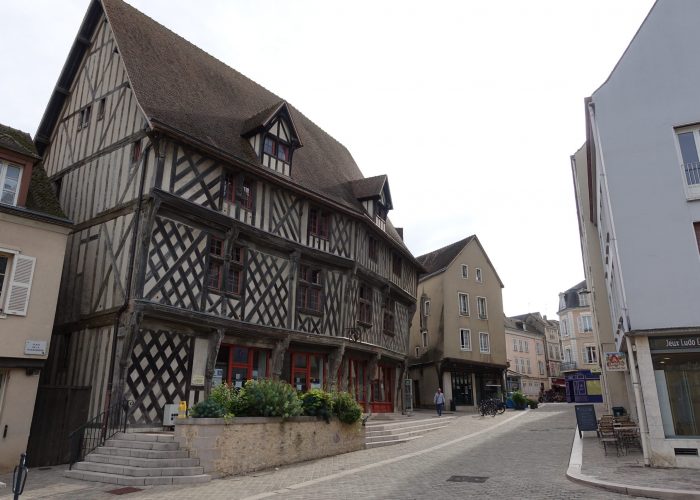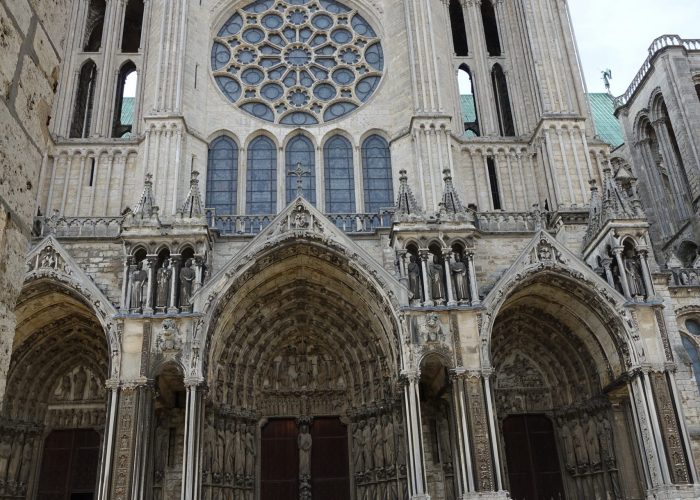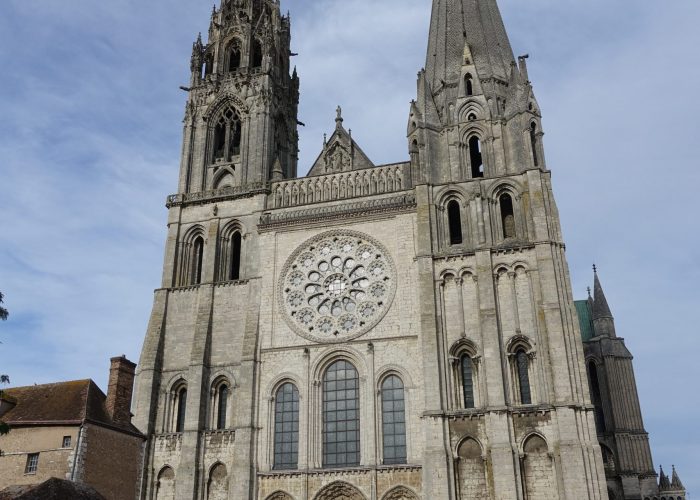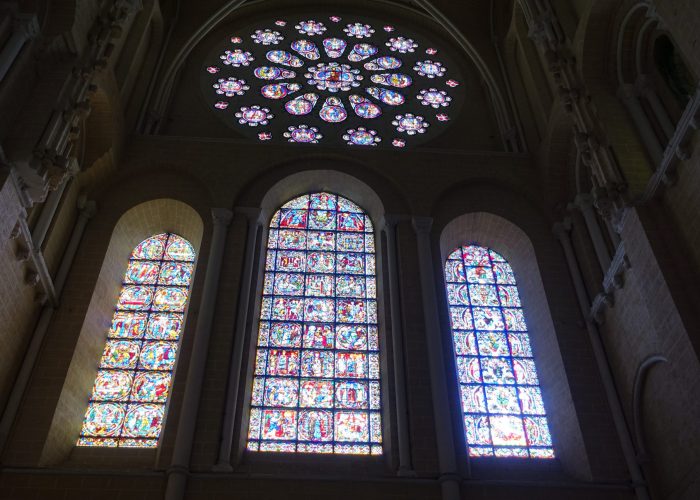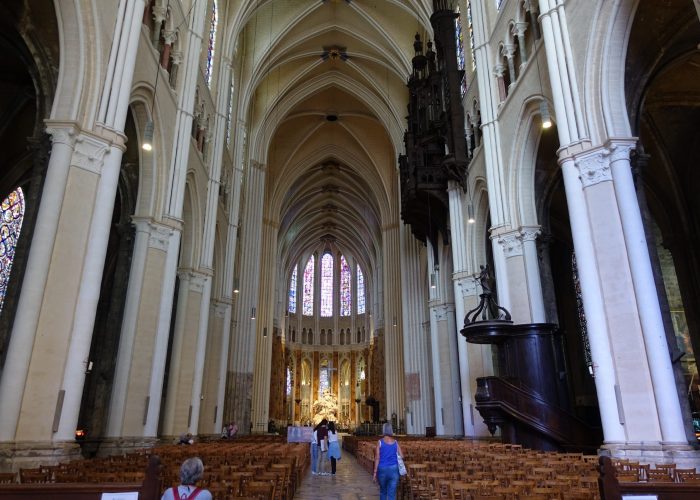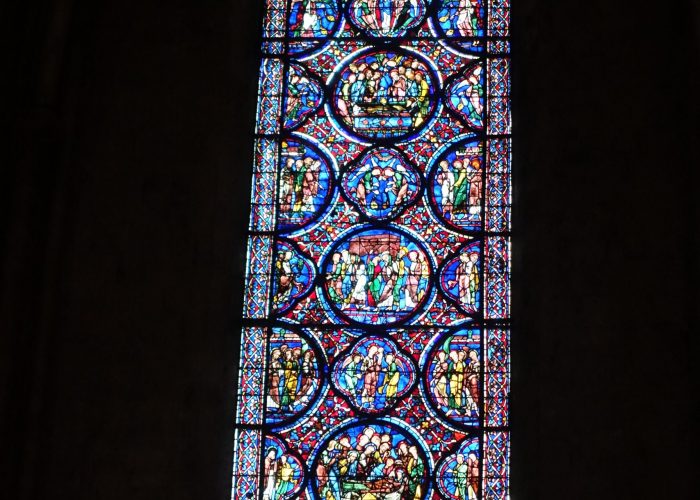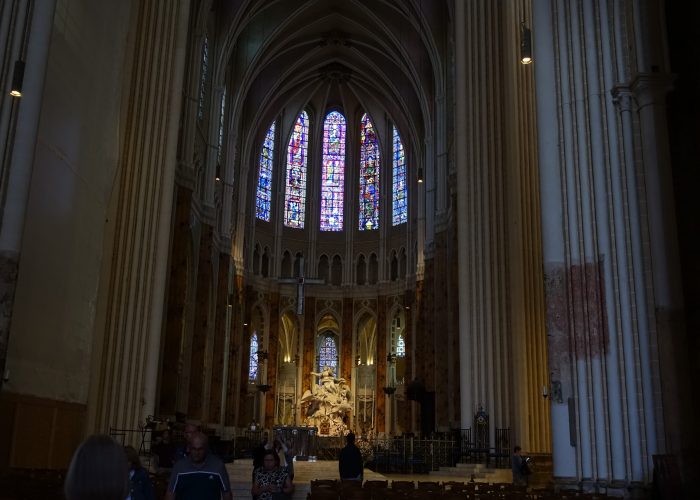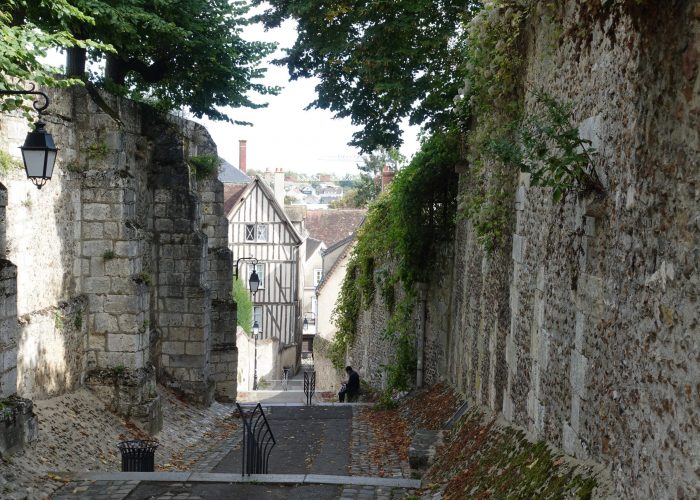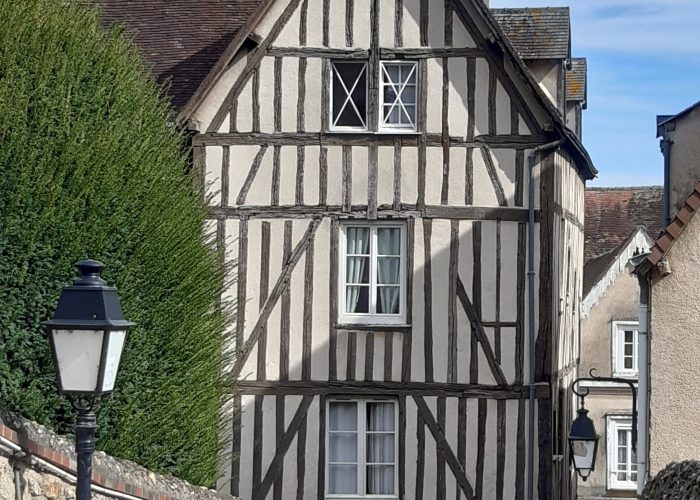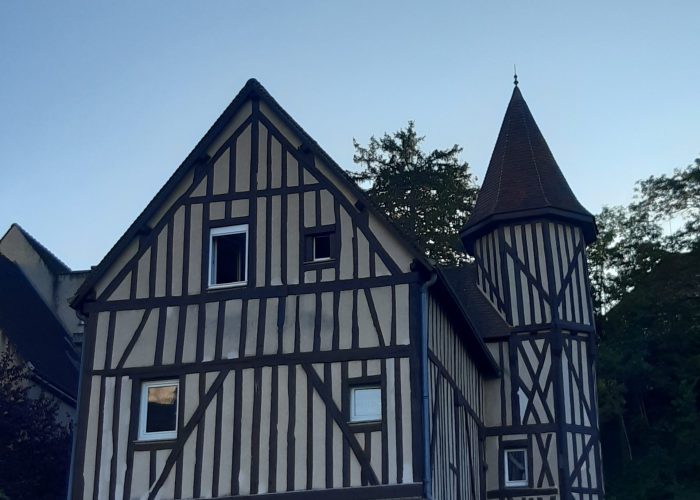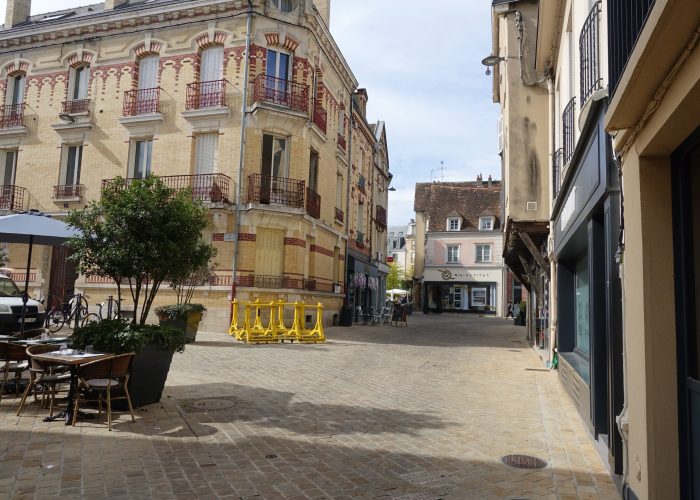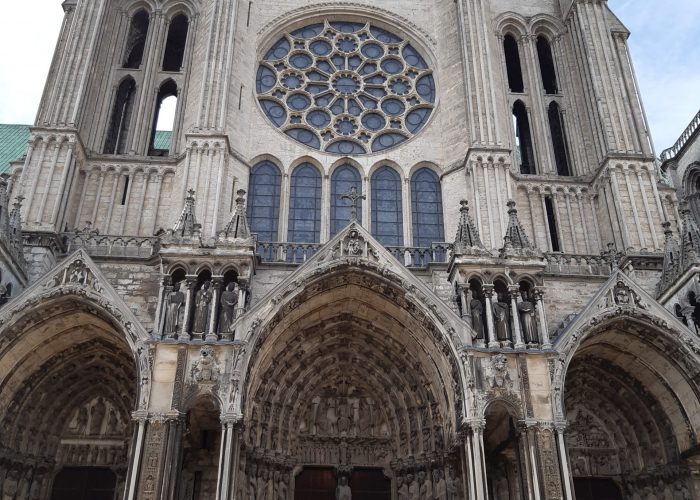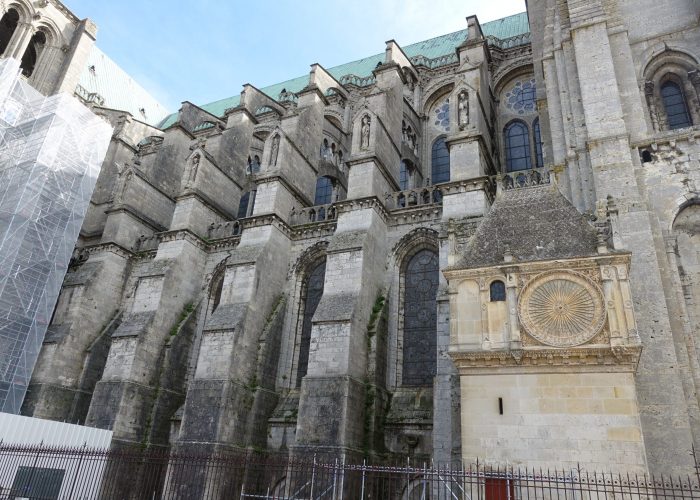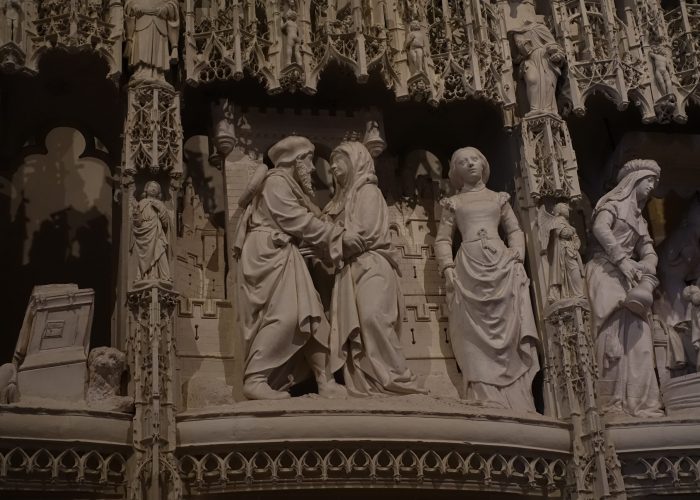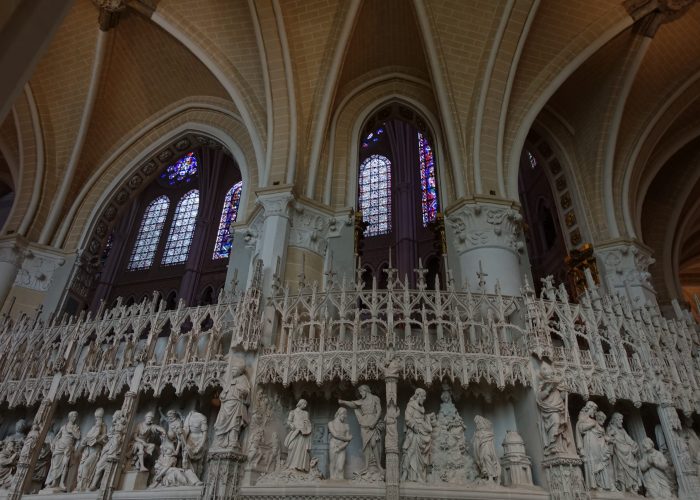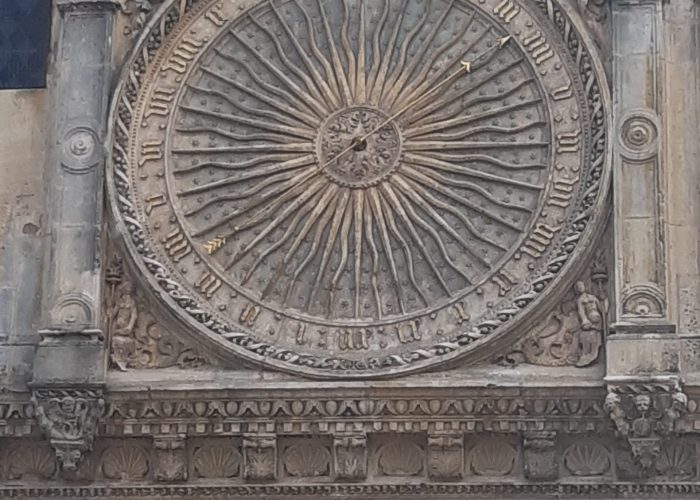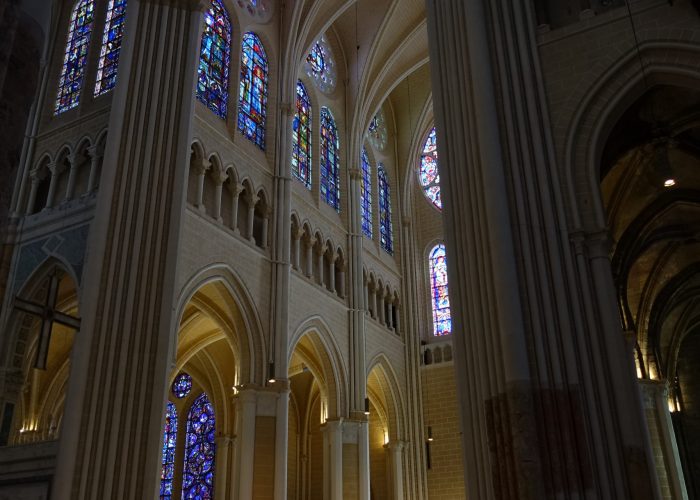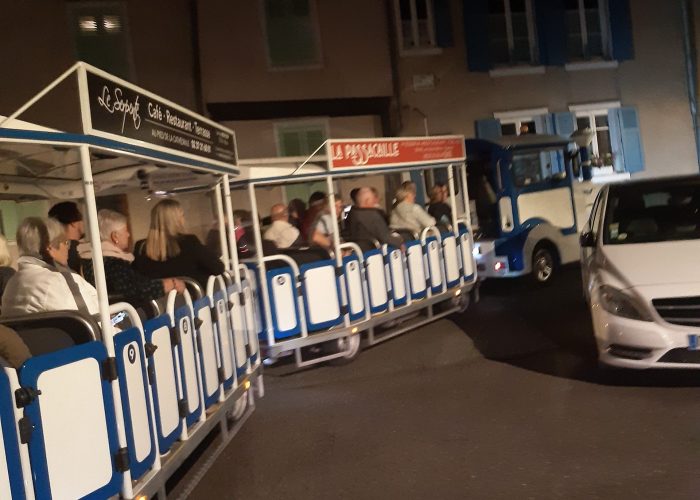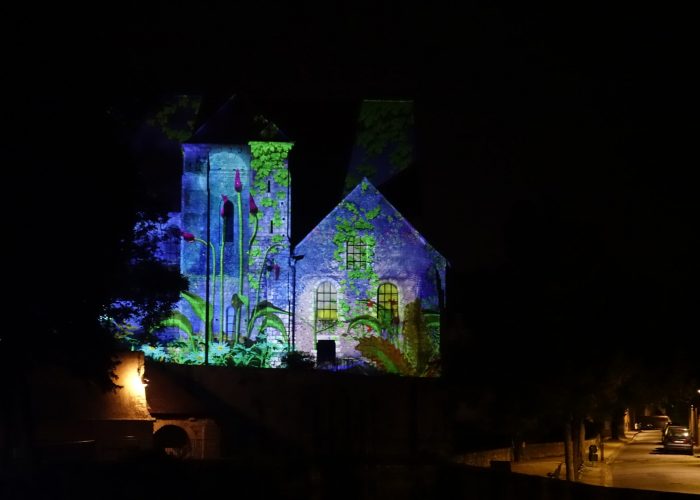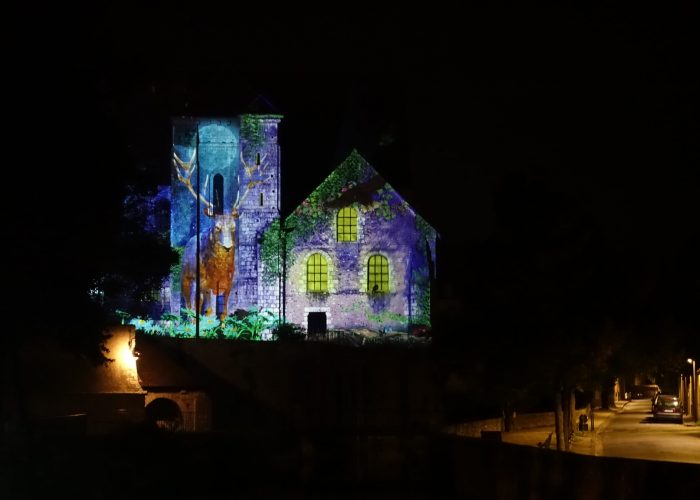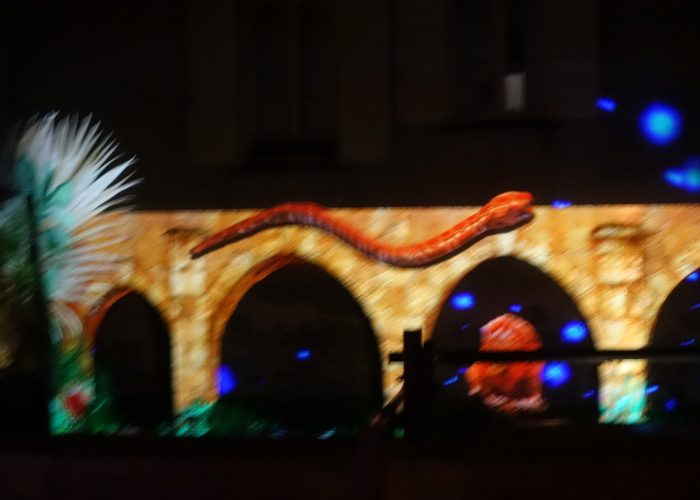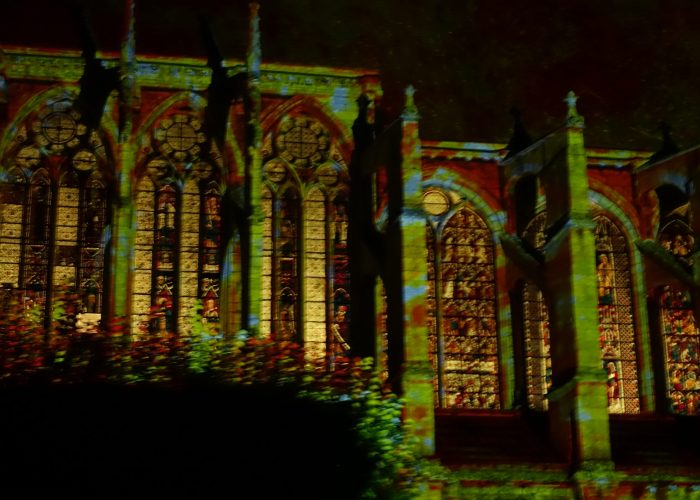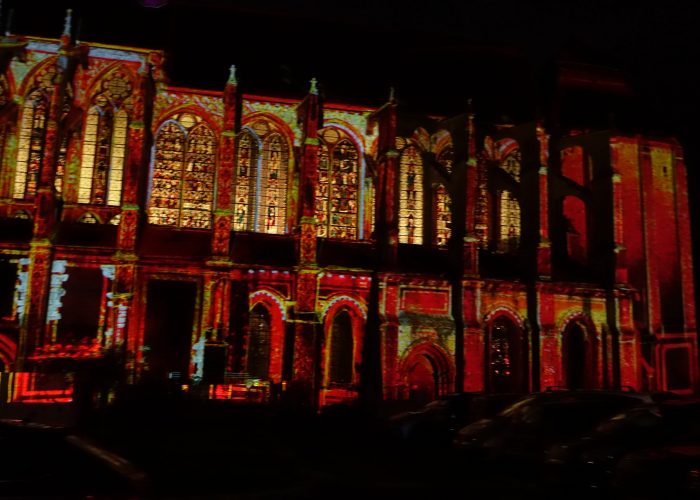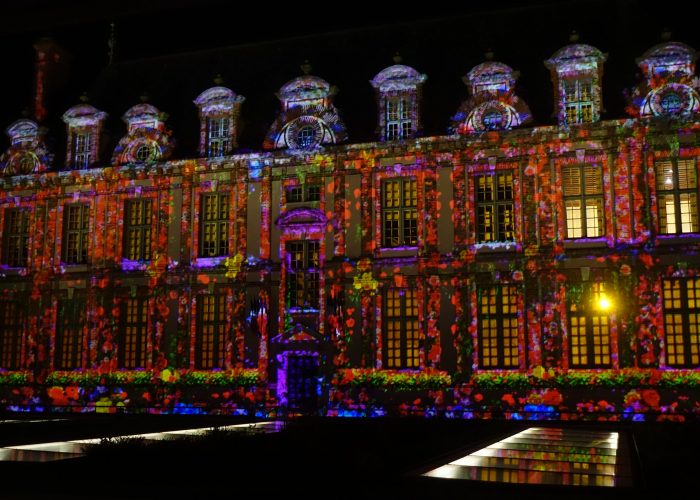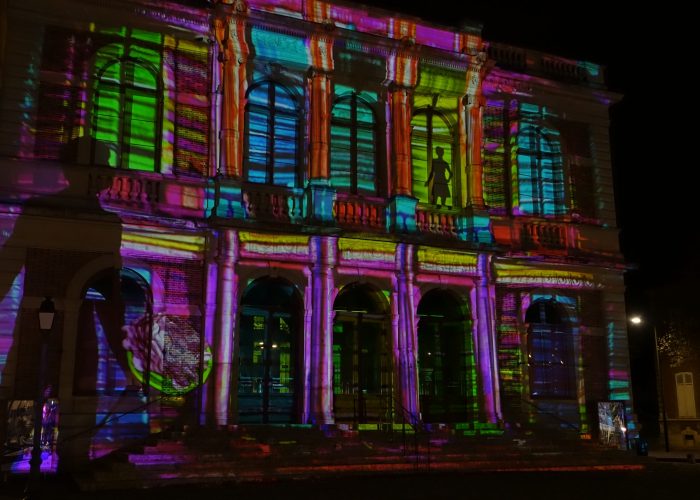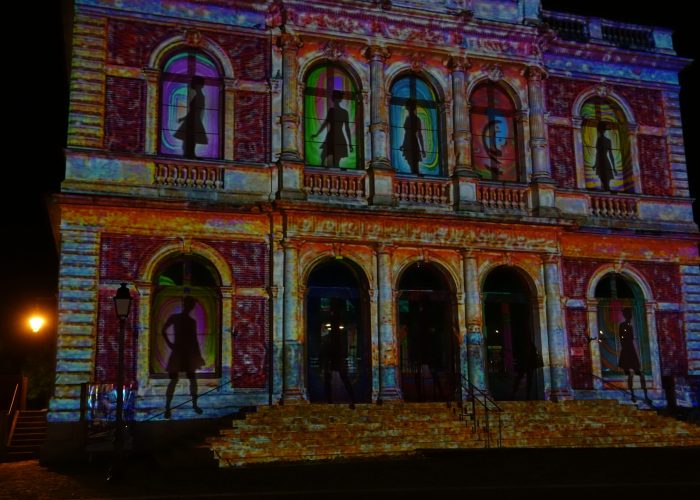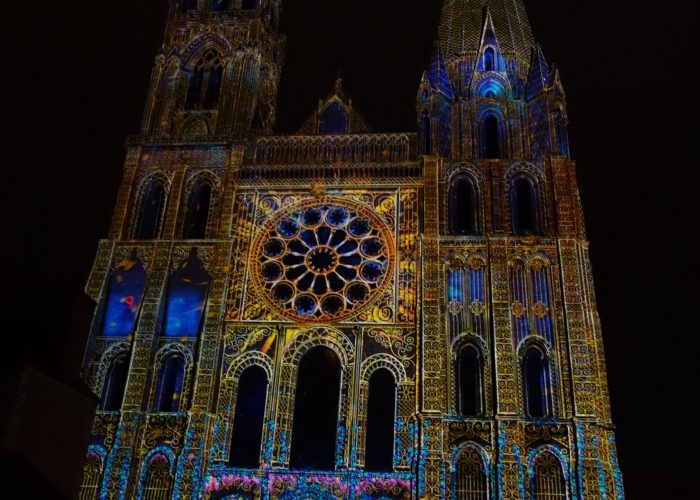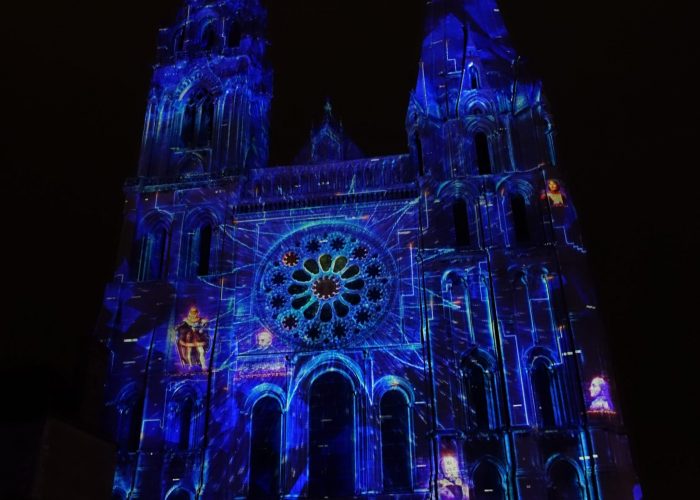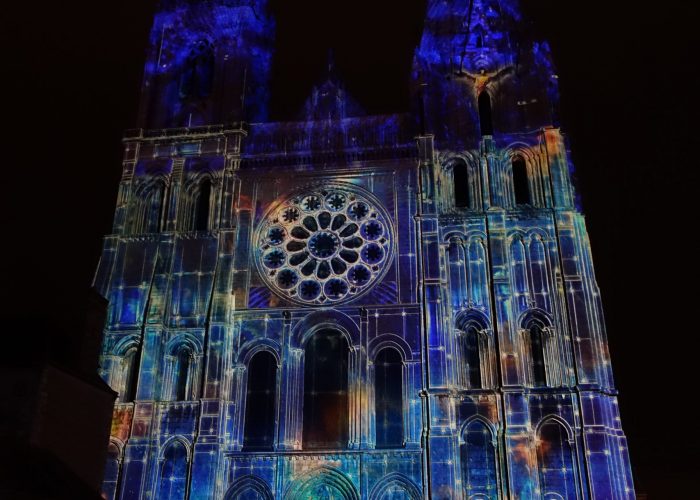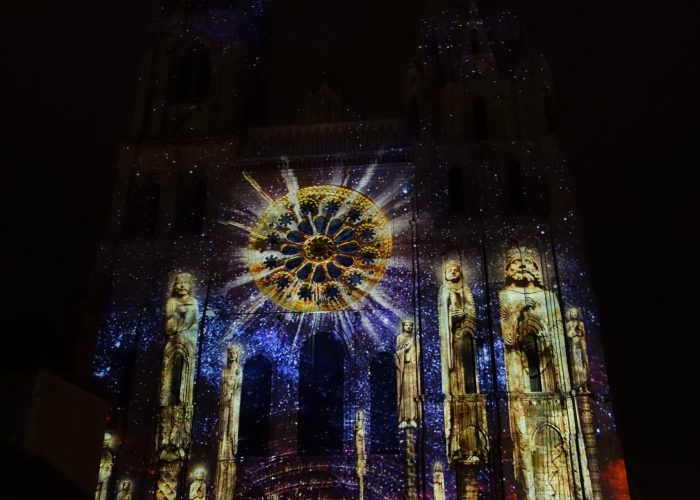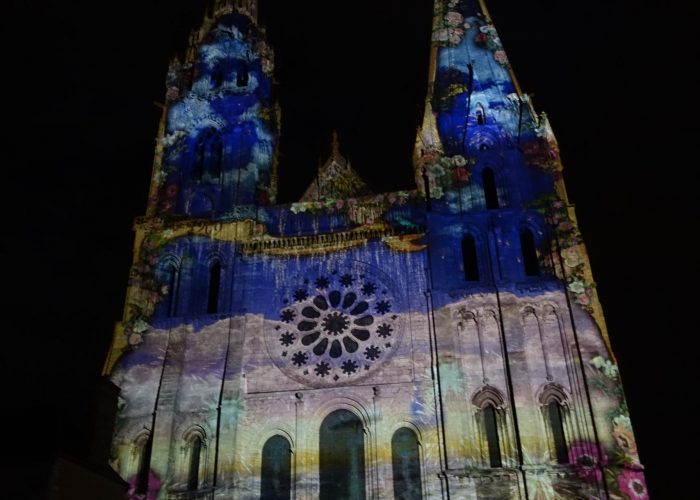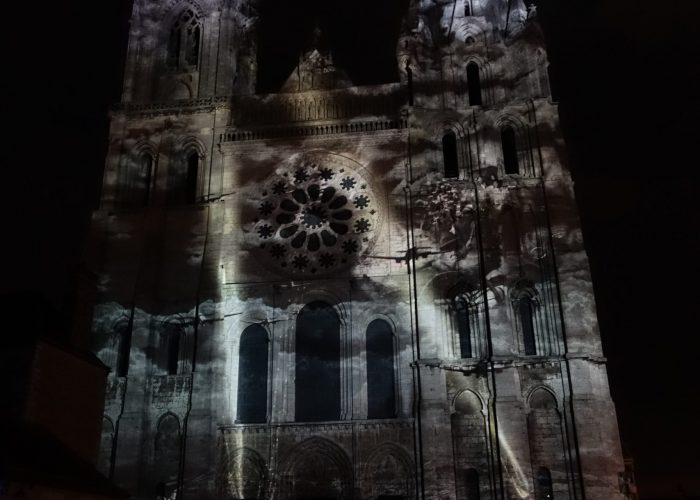We left Val de Blois early as we had an 80 mile drive to Chartres, we arrived at the campsite early afternoon, hoping they would have a space for us. We were given a pitch in the far corner of the site, not the nicest but okay for 2 nights. We did get chatting to some other English and Welsh campers and we concluded that we’d been put in the least favourable part of the site. They must have thought we Brits were trouble! However, it didn’t deter us from deciding that we would declare independence the next day!
We walked along the river into the town in search of Ye Olde L’Office de Tourisme, where we found very helpful staff. So, armed with a map we set out to explore the cathedral area. By this time, we’d seen some wonderful cathedrals, but Chartres was really lovely. It’s built on a site that has been the home to at least 5 earlier cathedrals, dating back to the 5th century. It has seen fires, the building of a second spire, the coronation of a king and was threatened with destruction in the French revolution.
Early in the French Revolution a mob attacked and began to destroy the sculpture on the north porch, but was stopped by a larger crowd of townspeople. The local Revolutionary Committee decided to destroy the cathedral via explosives and asked a local architect to find the best place to set the explosions. He saved the building by pointing out that the vast amount of rubble from the demolished building would so clog the streets it would take years to clear away. The cathedral, like Notre Dame de Paris and other major cathedrals, became the property of the French State and worship was halted until the time of Napoleon, but it was not further damaged.
On August 16, 1944, the cathedral was saved from destruction thanks to the American colonel Welborn Barton Griffith Jr. (1901–1944), who questioned the order he was given to target the cathedral. The Americans believed that the steeples and towers were being used as an observation post for German artillery. Griffith, accompanied by a volunteer soldier, instead decided to go and verify whether or not the Germans were using the cathedral. Griffith could see that the cathedral was empty, so he had the cathedral bells ring as a signal for the Americans not to shoot. Upon hearing the bells, the American command rescinded the order to fire. Colonel Griffith died in combat action that same day. He was posthumously decorated by the French and American governments.
Stained glass windows date back to the 12th century and are really beautiful. The choir screen alone took 200 years to complete. It truly is a unique building with it’s 2 mis-matched spires, but for me, the highlight was the Chartes en Lumieres tour which we did in the evening.
Having studied the map of the light trail which the L’Office de Tourisme helpfully provided, we decided to catch the tourist train and were so glad that we did! A helpful commentary explained where we were as we toured the periphery of the town centre and made it really enjoyable. There were really imaginative illuminations, some of which told a story. At the theatre, they told the story of the stage hand who was enamoured of one of the dancers. The tour ended at the cathedral where we sat and watched the final parts of the show. One segment told the story of the cathedral through the ages, the second segment the more recent history. It was absolutely stunning and the pictures I’ve included hardly begin to do it justice.
The light show is on from April till the end of January and is now in it’s 20th year. I’d highly recommend that you go and see it if you are in the area.
Sadly, we were now approaching the last few days of our sojourn in France. Next day it was off to Giverny.
